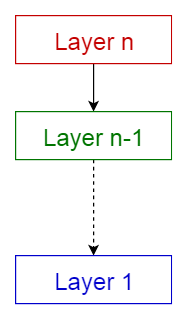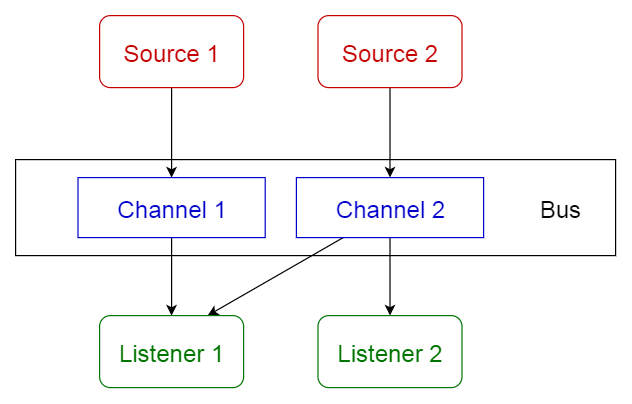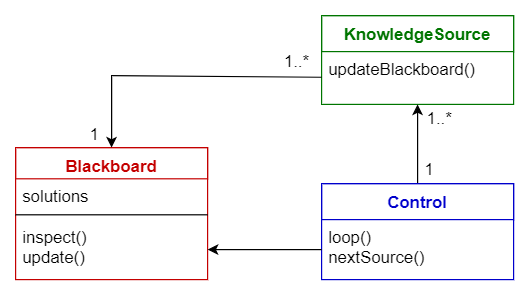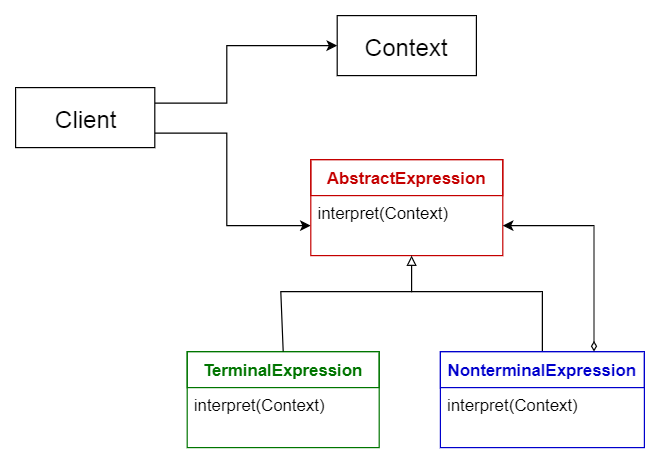Architectural Patterns.
These architecture patterns are a reusable solution to a commonly occurring problem within the field of software design. Software architecture patterns are a description or template for the structural organization or scheme for how to solve a problem that can be used in many different situations.
- Layered pattern
This pattern can be used to structure programs that can be divided into groups of subtasks, each of which is at a particular level of abstraction. Each layer provides services to the next higher layer.
Layers of a general information system:
- Presentation layer
- Application layer
- Business logic layer
- Data access layer
Usage
- General desktop applications.
- E commerce web applications.

2. Client-server pattern
Consists of two parties; server and multiple clients. The server component will provide services to multiple client components. Clients request services from the server and the server provides relevant services to those clients.
Usage
- Online applications such as email, document sharing and banking
4. Pipe-filter pattern
This can be used to structure systems which produce and process a stream of data. Each processing step is enclosed within a filter component. Data to be processed is passed through pipes.
Usage
- Compilers. The consecutive filters perform lexical analysis, parsing, semantic analysis, and code generation.
- Workflows in bioinformatics.

5. Broker pattern
It’s used to structure distributed systems with decoupled components. These components can interact with each other by remote service invocations.
Usage
- Message broker software such as Apache ActiveMQ, Apache Kafka, RabbitMQ and JBoss Messaging.
6. Peer-to-peer pattern
In this pattern, individual components are known as peers. Peers may function both as a client, requesting services from other peers, and as a server, providing services to other peers.
Usage
- File-sharing networks such as Gnutella and G2
- Multimedia protocols such as P2PTV and PDTP.
- Crypto currency-based products such as Bitcoin and Blockchain
7. Event-bus pattern
This pattern primarily deals with events and has 4 major components; event source, event listener, channel and event bus. Sources publish messages to particular channels on an event bus. Listeners subscribe to particular channels. Listeners are notified of messages that are published to a channel to which they have subscribed before.
Usage
- Android development
- Notification services

9. Blackboard pattern
This pattern is useful for problems for which no deterministic solution strategies are known. The blackboard pattern consists of 3 main components.
- blackboard — a structured global memory containing objects from the solution space
- knowledge source — specialized modules with their own representation
- Control component — selects, configures and executes modules.
Usage
- Speech recognition
- Vehicle identification and tracking
- Protein structure identification
- Sonar signals interpretation.

10. Interpreter pattern
This pattern is used for designing a component that interprets programs written in a dedicated language. It mainly specifies how to evaluate lines of programs, known as sentences or expressions written in a particular language.
Usage
- Database query languages such as SQL.
- Languages used to describe communication protocols.

REFERENCE